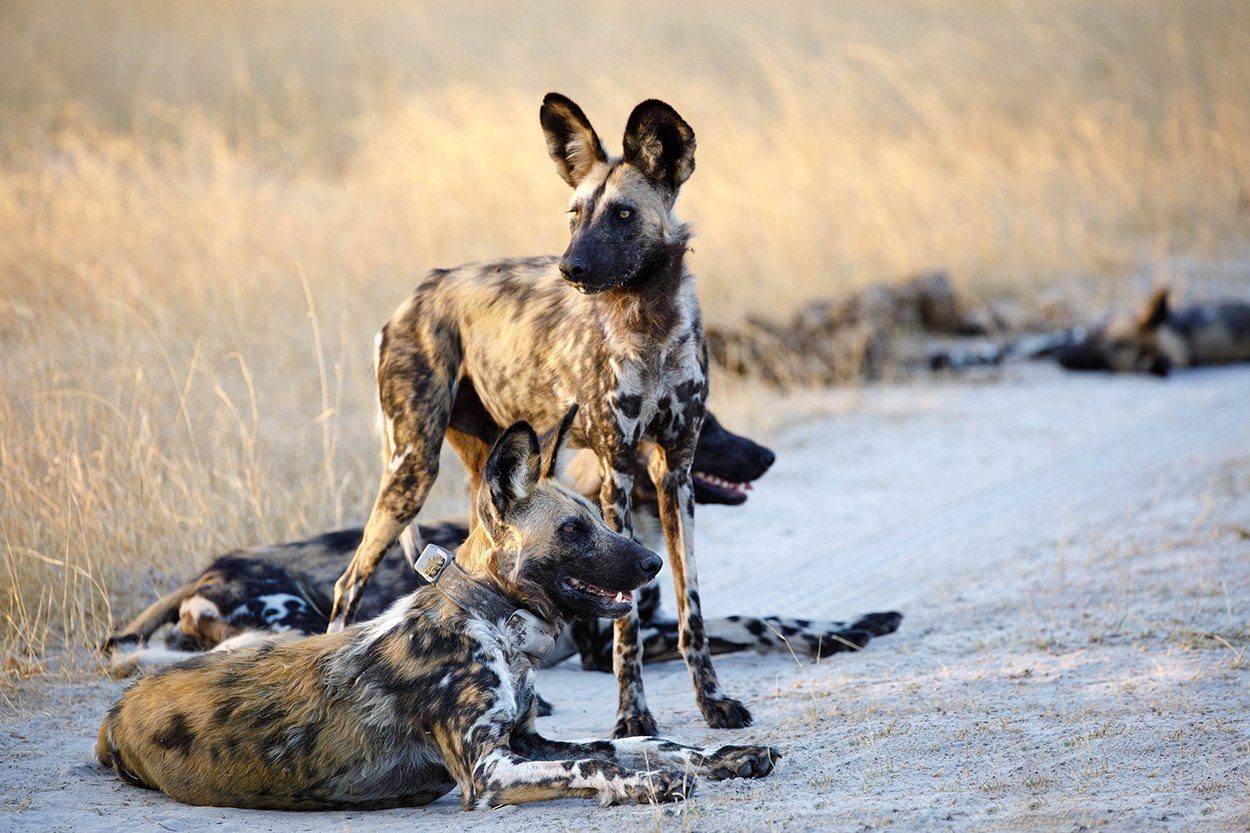
At first glance, these African wild dogs resemble hyenas and their hunting behavior is also quite similar. The wild dog, therefore also known as the hyena dog, is, in contrast to the hyenas, endangered.
Although they are not direct relatives, African wild dogs (Lycaon pictus) and hyenas are very similar in appearance. In addition to the stature and the bushy tail, the wild dogs only have four instead of the five common for dogs. That is why they are also known as “hyena dogs”.
The fur color of the African wild dogs is also similar to the hyenas. The special thing about the black-ground fur is that each dog has individual spots in brown, red, yellow and white tones, as can also be seen in the two individuals in our photo. This coat color gave the wild dogs their name – their scientific name means something like “colorful wolf”.
In their area of distribution, the steppes of Africa, the colorful wild dogs are well camouflaged. In addition, they can turn their large, round ears in all directions and thus perceive noises from over three kilometers away. This helps the dogs to communicate within their pack when hunting. The hyena dogs hunt together very skillfully and are therefore among the most efficient predators in Africa. Their prey includes gazelles, wildebeests and warthogs.
But although the wild dogs are adapted to their habitat and are good hunters, they are considered to be highly endangered: Originally, the African wild dog was found in almost all savannas in Africa. Today, with only around 6,000 individuals, it is one of the rarest animals in Africa. The wild dogs are only found sporadically in Botswana, Zimbabwe, Zambia and South Africa as well as in Tanzania and Kenya. The young wild dogs, which have just reached maturity for the first time, are particularly at risk. Because they go in search of conspecifics capable of mating and a territory to found their own pack. In doing so, they cover hundreds of kilometers – again and again through areas that are inhabited and built up by people.
Researchers working with David Hofmann from the University of Zurich in five countries in southern Africa have investigated how endangered they are when they migrate through the savannahs. They equipped the animals with GPS collars and used the movement data to analyze which habitats are preferred or avoided by wild dogs. They also checked whether the dogs are using the game corridors that connect the protected areas in the area.
It turned out that many wild dogs actually used the corridors within the Kavango-Zambezi Conservation Area. However, not every route of the wild dogs runs through protected areas and some migrating animals are hindered by settlements, roads and agriculture. In the future, the team therefore wants to put additional routes under protection for the endangered hyena dogs.